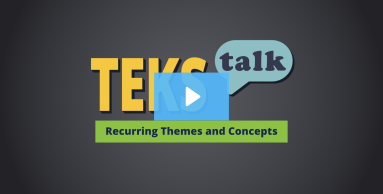
Knowledge and Skills Statement
The further explanation is designed to be a resource for educators that helps them better understand the topic their students are learning. Further explanations may be written at a more complex level than would be expected for students at the grade level.
Both scientists and engineers use models. Physical models show how things look or work in the real world. Conceptual models represent relationships and describe how things work or fit together. Mathematical models use mathematical equations, theories, formulas, and proofs. Simulations allow for the control of variables and mimic real-world processes. Models are used to make predictions about the behavior of a system, and examples include sketches, diagrams, mathematical relationships, simulations, physical models, and prototypes.
Scientists perform investigations within systems. Systems have boundaries, components, resources, flow, and feedback. Examples of systems include organisms, machines, galaxies, ideas, and numbers. In laboratory or field research, an essential element affecting the design of an investigation and the interpretation of results is the extent to which the system can be physically isolated or the external conditions controlled.
Engineers predict a system’s behaviors and diagnose problems or failures in system functioning. For example, in a simple mechanical system, interactions among the parts are described in terms of forces that cause changes in motion or physical stresses. A crucial element of system design is considering flows into and out of a system. Systems thinking and system models support critical steps in developing, sharing, testing, and refining design ideas.
Research
National Research Council. A Framework for K-12 Science Education: Practices, Crosscutting Concepts, and Core Ideas. 2021. Washington: The National Academies Press https://doi.org/10.17226/13165
Summary: Students should begin representing models by creating drawings or diagrams accompanied by oral or written descriptions of what they drew. These drawings or diagrams can represent organisms and their parts and how those parts help them function. Students should also practice coming up with instructions that other students can follow. This allows students to understand the importance of representing their ideas.
